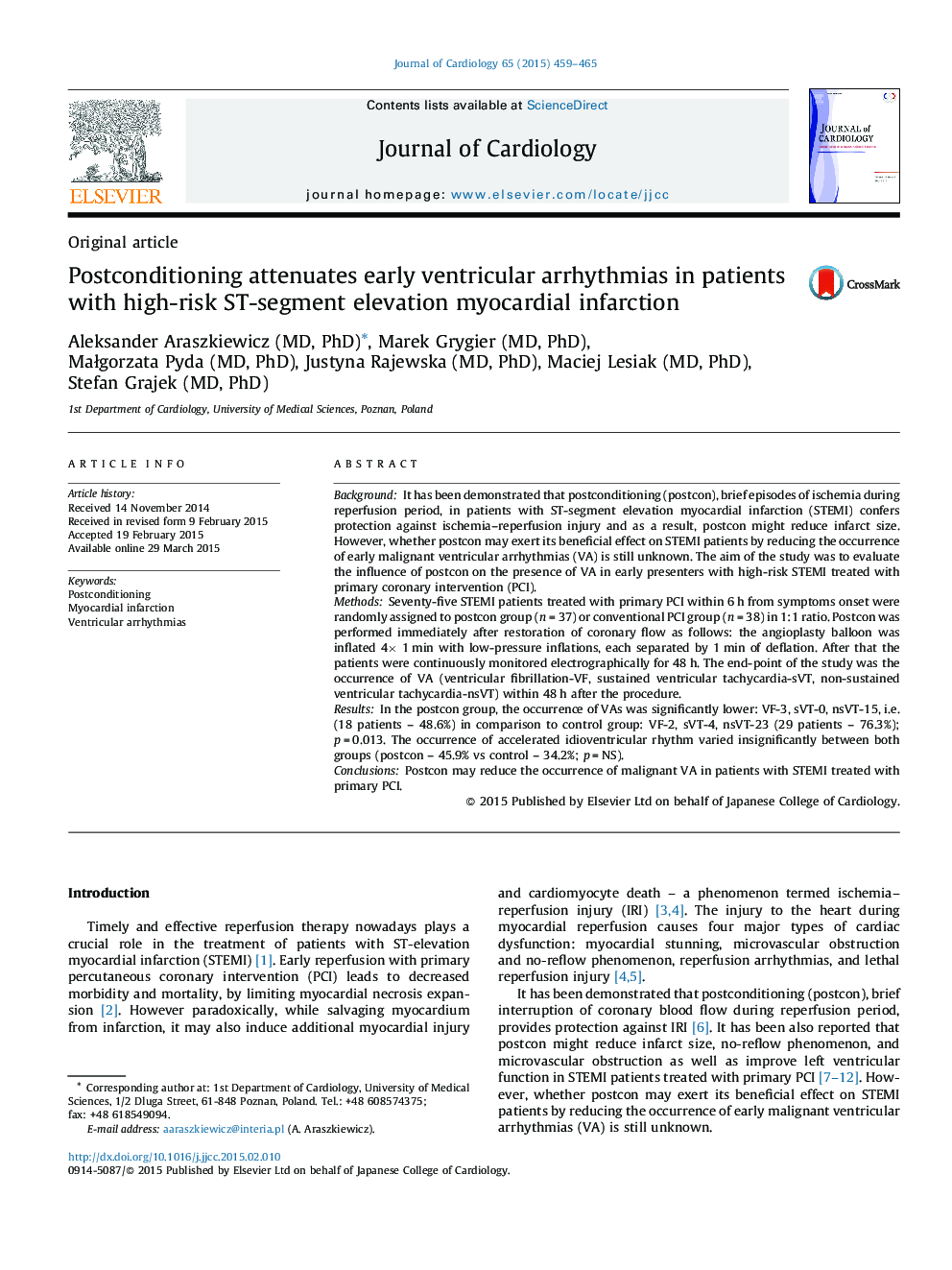| Article ID | Journal | Published Year | Pages | File Type |
|---|---|---|---|---|
| 5984020 | Journal of Cardiology | 2015 | 7 Pages |
BackgroundIt has been demonstrated that postconditioning (postcon), brief episodes of ischemia during reperfusion period, in patients with ST-segment elevation myocardial infarction (STEMI) confers protection against ischemia-reperfusion injury and as a result, postcon might reduce infarct size. However, whether postcon may exert its beneficial effect on STEMI patients by reducing the occurrence of early malignant ventricular arrhythmias (VA) is still unknown. The aim of the study was to evaluate the influence of postcon on the presence of VA in early presenters with high-risk STEMI treated with primary coronary intervention (PCI).MethodsSeventy-five STEMI patients treated with primary PCI within 6 h from symptoms onset were randomly assigned to postcon group (n = 37) or conventional PCI group (n = 38) in 1:1 ratio. Postcon was performed immediately after restoration of coronary flow as follows: the angioplasty balloon was inflated 4à 1 min with low-pressure inflations, each separated by 1 min of deflation. After that the patients were continuously monitored electrographically for 48 h. The end-point of the study was the occurrence of VA (ventricular fibrillation-VF, sustained ventricular tachycardia-sVT, non-sustained ventricular tachycardia-nsVT) within 48 h after the procedure.ResultsIn the postcon group, the occurrence of VAs was significantly lower: VF-3, sVT-0, nsVT-15, i.e. (18 patients - 48.6%) in comparison to control group: VF-2, sVT-4, nsVT-23 (29 patients - 76.3%); p = 0.013. The occurrence of accelerated idioventricular rhythm varied insignificantly between both groups (postcon - 45.9% vs control - 34.2%; p = NS).ConclusionsPostcon may reduce the occurrence of malignant VA in patients with STEMI treated with primary PCI.
